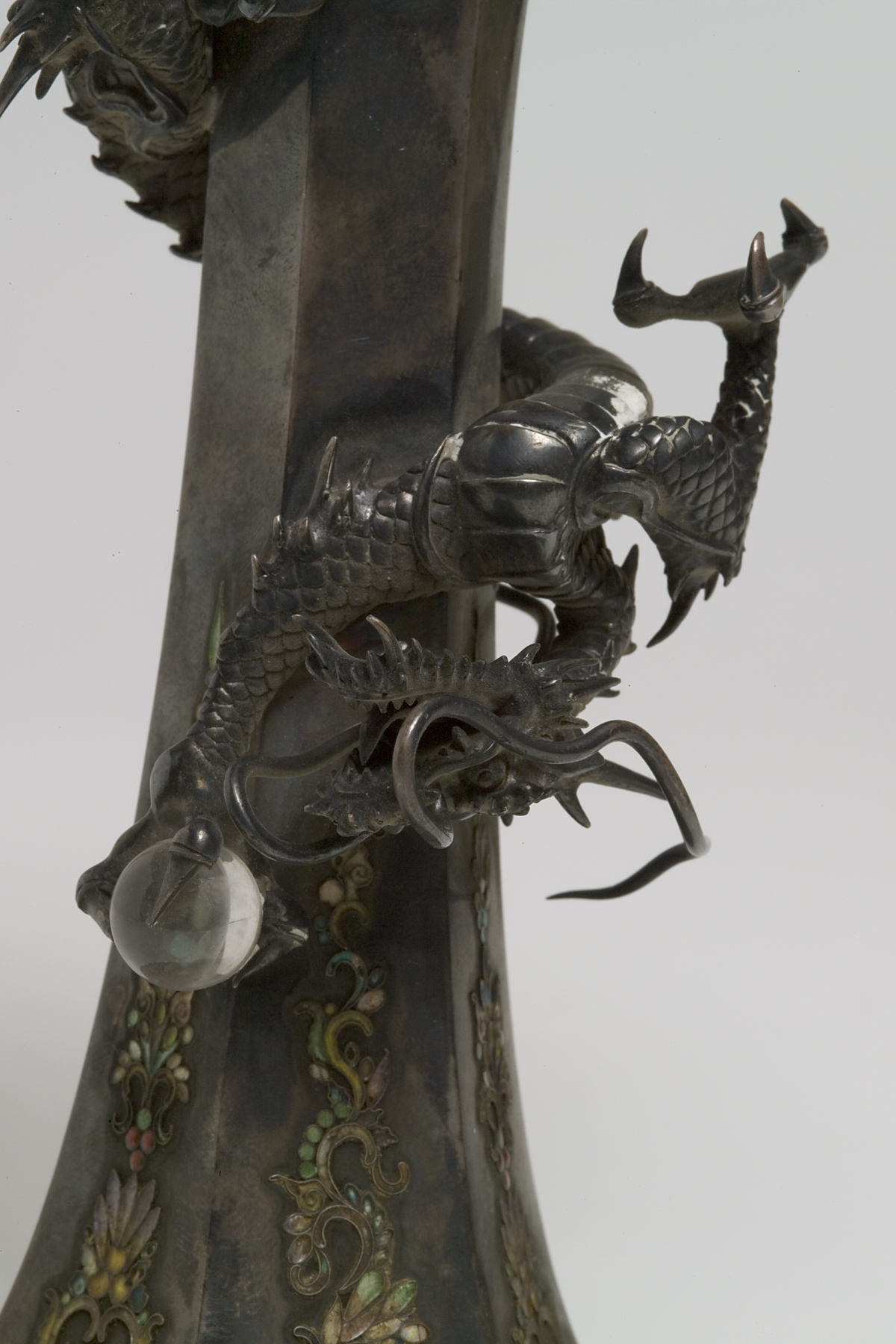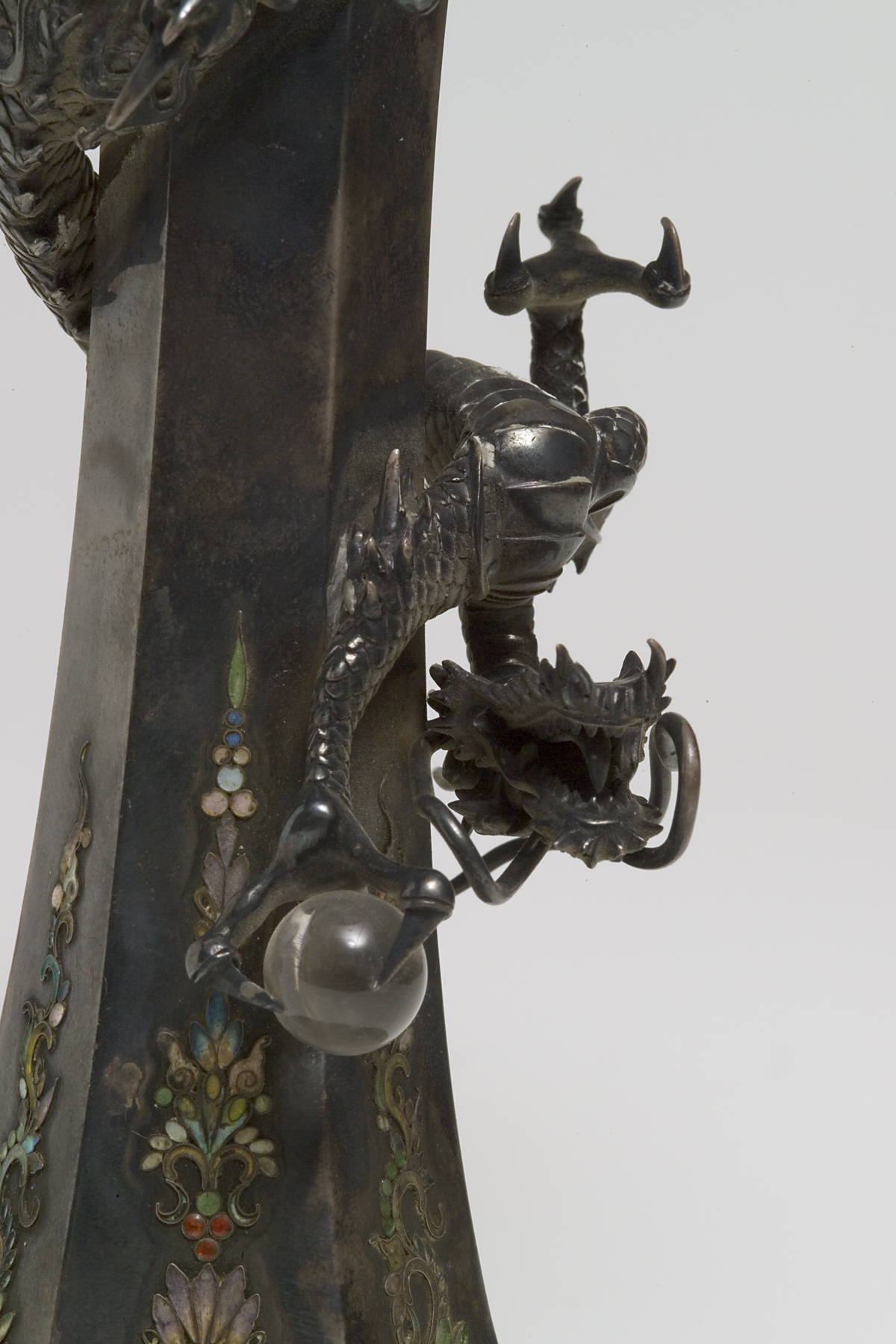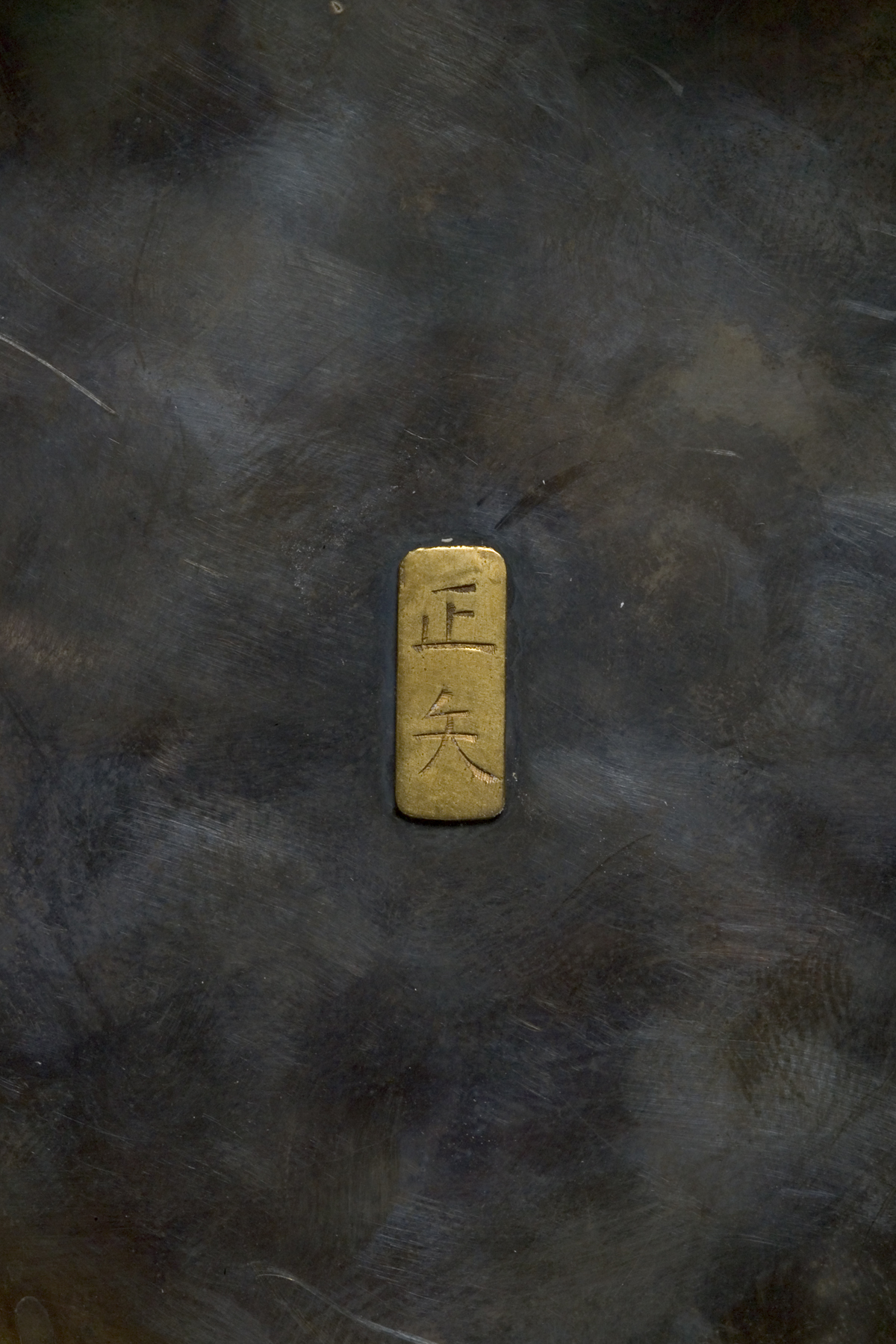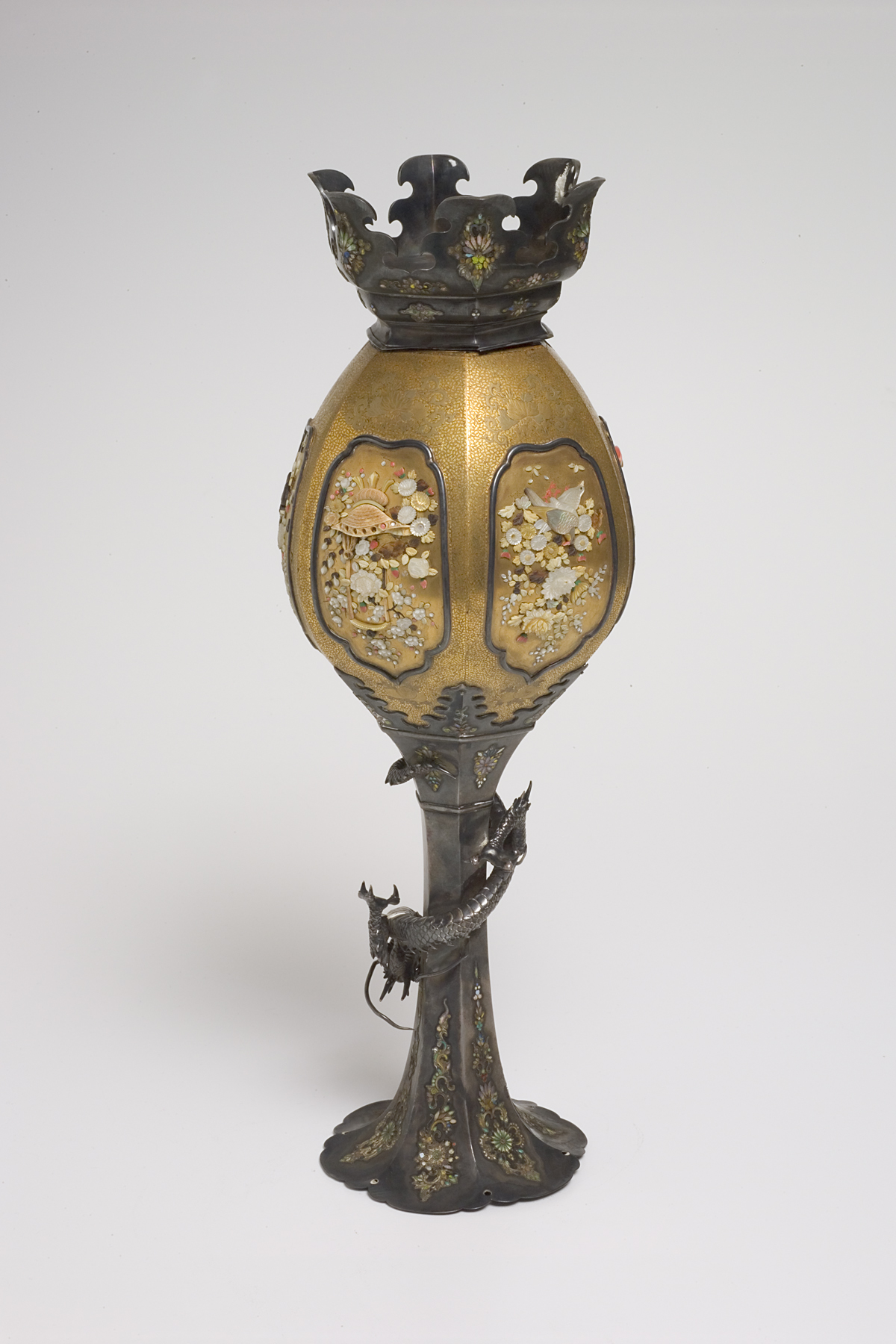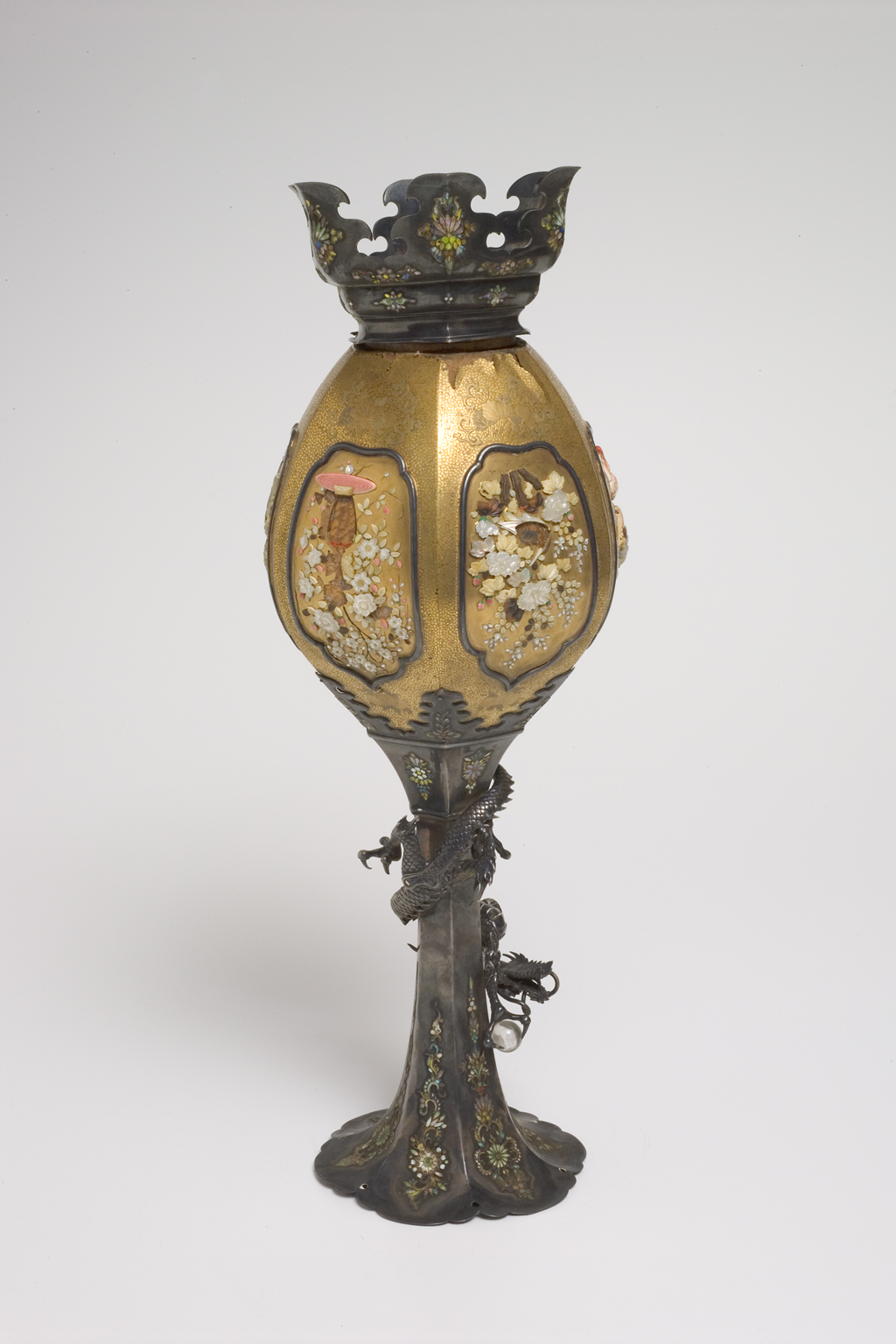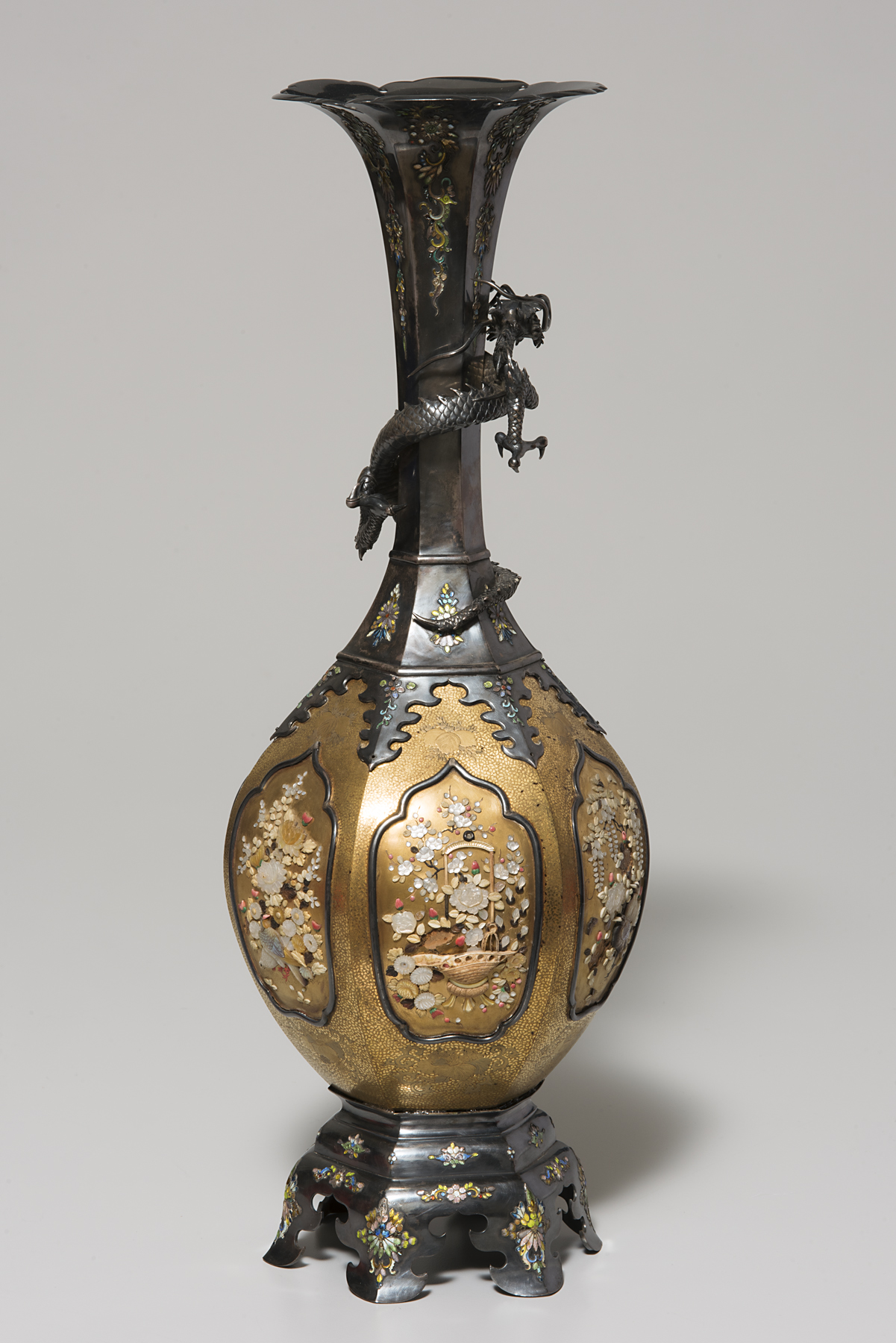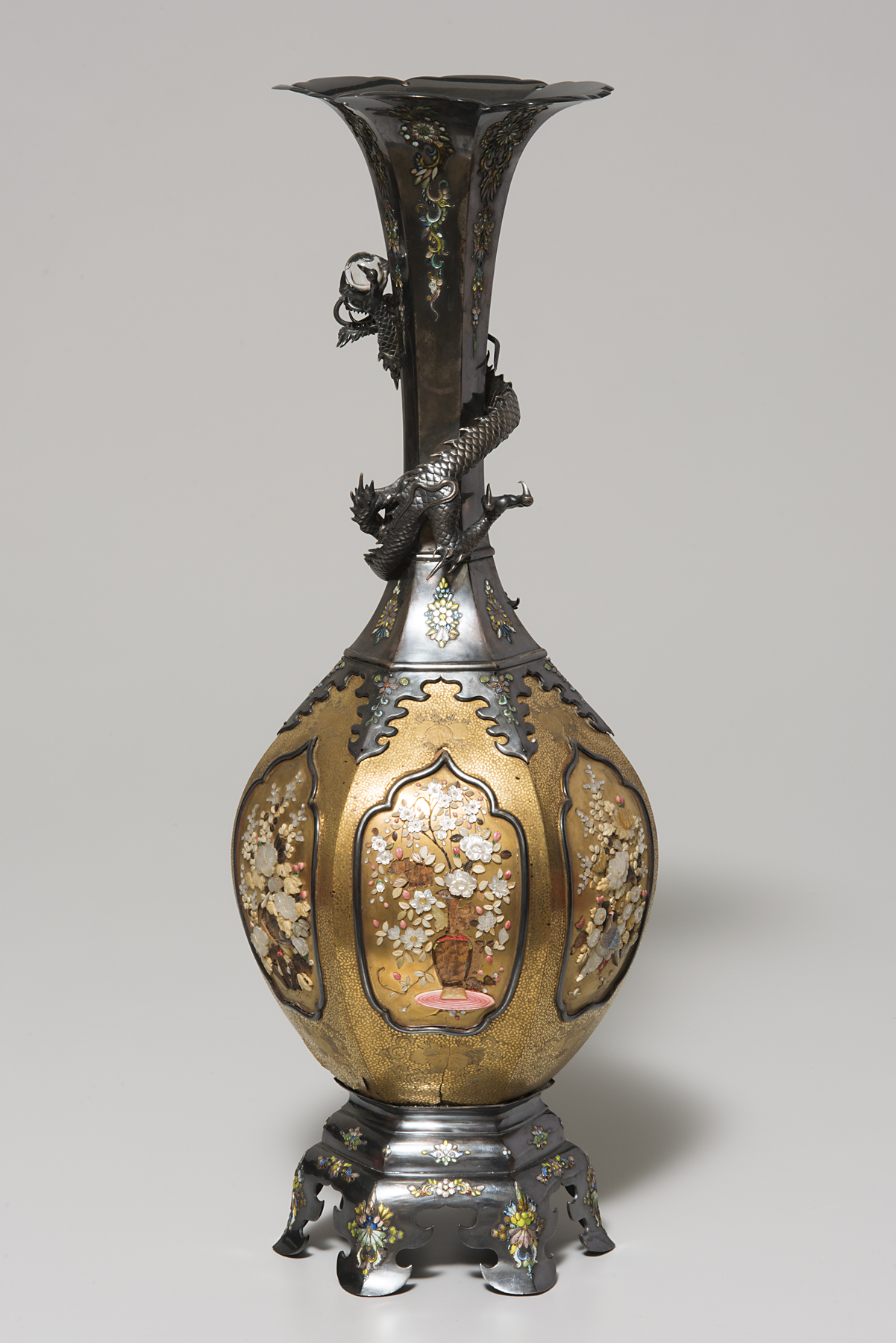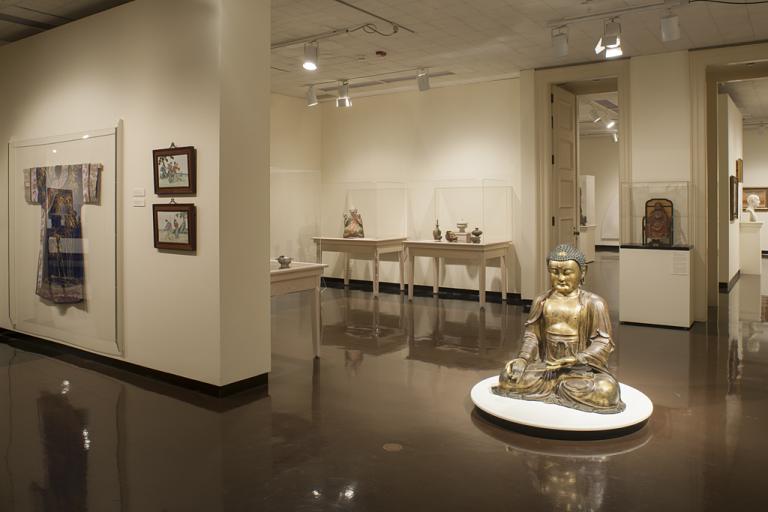vase with dragon around neck, Seishi)
Artwork Overview
Seishi, artist
Meiji period (1868–1912)
vase with dragon around neck,
circa 1880s, Meiji period (1868–1912)
Where object was made: Japan
Material/technique: lacquer inlay (Shibayama 芝山); silver
Dimensions:
Object Height/Diameter (Height x Diameter): 33.2 x 14 cm without base
Object Height/Diameter (Height x Diameter): 13 1/16 x 5 1/2 in
Object Height/Diameter (Height x Diameter): 15 3/16 x 5 1/2 in
Object Height/Diameter (Height x Diameter): 38.6 x 14 cm with base
Object Height/Diameter (Height x Diameter): 33.2 x 14 cm without base
Object Height/Diameter (Height x Diameter): 13 1/16 x 5 1/2 in
Object Height/Diameter (Height x Diameter): 15 3/16 x 5 1/2 in
Object Height/Diameter (Height x Diameter): 38.6 x 14 cm with base
Credit line: William Bridges Thayer Memorial
Accession number: 1928.2862
Not on display
If you wish to reproduce this image, please submit an image request

